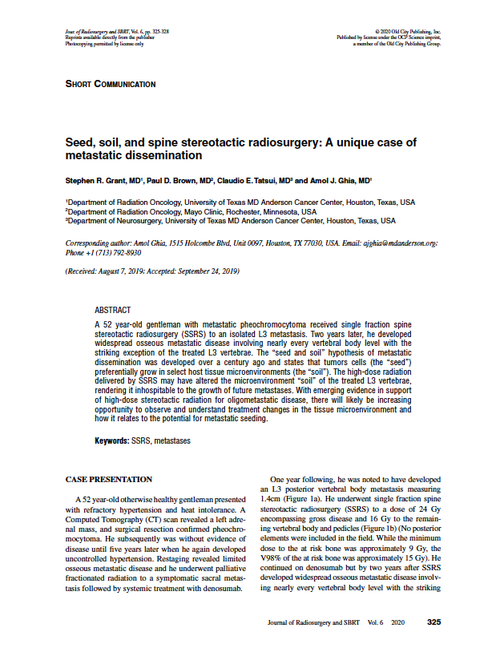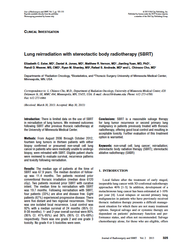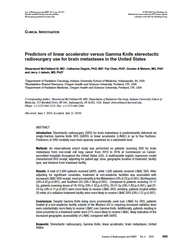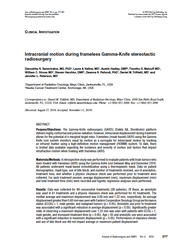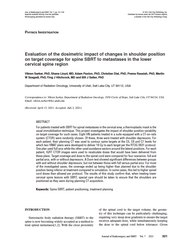- Home
- Journal Contents Downloads
- JRSBRT Downloads
- JRSBRT 6.4, p. 325-328
Product Description
Seed, soil, and spine stereotactic radiosurgery: A unique case of metastatic dissemination
Stephen R. Grant, Paul D. Brown, Claudio E. Tatsui and Amol J. Ghia
A 52 year-old gentleman with metastatic pheochromocytoma received single fraction spine stereotactic radiosurgery (SSRS) to an isolated L3 metastasis. Two years later, he developed widespread osseous metastatic disease involving nearly every vertebral body level with the striking exception of the treated L3 vertebrae. The “seed and soil” hypothesis of metastatic dissemination was developed over a century ago and states that tumors cells (the “seed”) preferentially grow in select host tissue microenvironments (the “soil”). The high-dose radiation delivered by SSRS may have altered the microenvironment “soil” of the treated L3 vertebrae, rendering it inhospitable to the growth of future metastases. With emerging evidence in support of high-dose stereotactic radiation for oligometastatic disease, there will likely be increasing opportunity to observe and understand treatment changes in the tissue microenvironment and how it relates to the potential for metastatic seeding.
Keywords: SSRS, metastases
After payment has been processed for your order of a digital copy (PDF) of this article, you will see a download link on your completed order page and also receive an email containing a download link. The links, which will enable you to download one copy of the article, will expire after 24 hours.
 Loading... Please wait...
Loading... Please wait...

